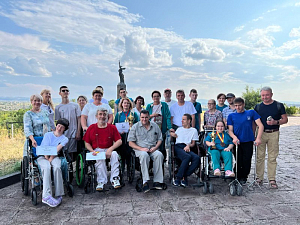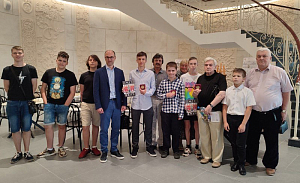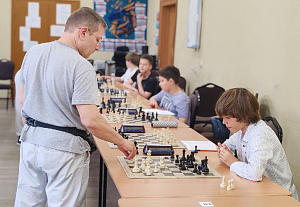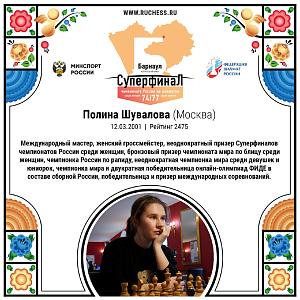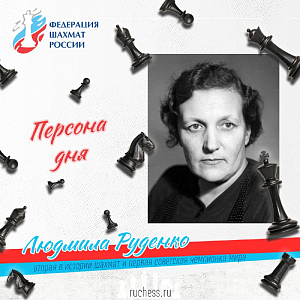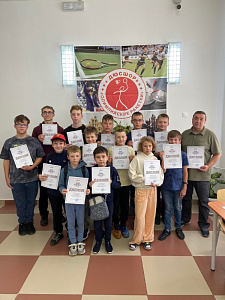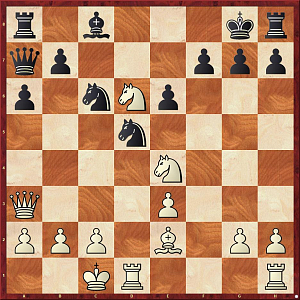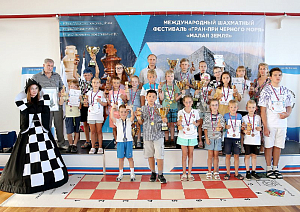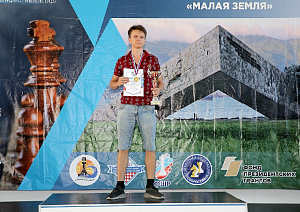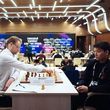Castaway Bishops
Round 5 of the World Team Championships in the review of Maxim Notkin
Team Russia defeated Norway 3 to 1 and took clear first.
Fedoseev radically responded to Hauge’s attempt to avoid basic theory in the Caro-Kann Defense: 1.e4 c6 2.Ne2 Qa5!?!
L. Hauge-V. Fedoseev
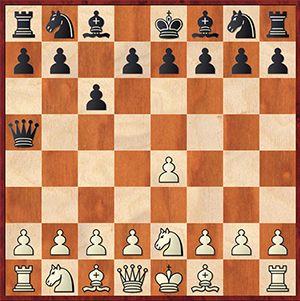
White tried to appear creatively different (3.c4 Nf6 4.Nbc3 e5 5.f4 exf4 6.Nxf4 Bb4 7.Bd3), but when situation became more or less normal, it turned out that Black had handled his pieces much more reasonably. After a little skirmish in the center, Fedoseev gained an edge due to his opponent’s pawn weaknesses and passive light-squared bishop. In the resultant endgame Black knights had eliminated a good half of the enemy’s infantry, and Hauge acknowledged his defeat.
In the middlegame of his duel with Vitiugov, Elsness had compensation for his minimal material losses, but active advance of black pawns in the center did not have a desired effect. Soon the position was simplified to a clear White’s advantage and, immediately after time-trouble was over, black king got mated in the endgame.
Svidler and Nepomniachtchi had unsettled supporters of team Russia just a bit, but in the end their respective games against Tari and Urkedal were tied.
Before their clash with each other, both Chinese and Turkish chessplayers (and the Russians, too) have not lost a single game. Well, the status quo was left undisrupted. Three games turned out to be quite nonconfrontational, and on the last board Li Chao, playing against Sanal, had frittered away has enormous advantage with his move 23 and, try as he might after that, was unable to turn his endgame initiative into something more tangible. 2:2, and now China shares the second place with Poland and is a point ahead of their today’s opponents.
Team Poland defeated Ukraine 3 to1. On the top board Ponomariov had developed a powerful attack against Wojtaszek’s kingside castled position, but failed to put his dark-squared bishop to a good use, and Black launched a crushing counterattack soon.
R. Ponomariov-R. Wojtaszek
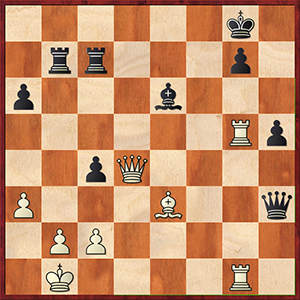
Computer sees no satisfactorily defense for Black after 30.Bd2 with the idea of Bc3, but after 30.R5g3 Qf5 31.Bh6 Qf8 32.Rg6 c3 33.b4 Bg4 34.Bf4 Rf7 35.Bc1 a5 the bishop, which has lost several tempi, is of no use either in offense or in defense.
The second point-scorer for Poland was Gajewski who had vanquished Kravtsiv. In a sharp position, the Ukranian player was a move late with taking on c3 with his rook and, instead of perpetual check, there arose a technical ending with an extra pawn for White.
Adhiban, who had completely recovered from his initial misfortunes, supplied a decisive point in the match Egypt vs. India. Fawzy was unable to prove that his pawn sacrifices had been correct. In the ending White gave up his major pieces for the sake of assuring a carefree way to the cherished goal for his three passed pawns on the Q-side.
B. Adhiban-A. Fawzy
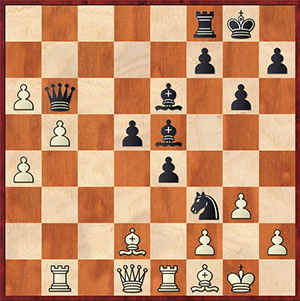
26.Qxf3! exf3 27.Rxe5 Rc8 28.Rxe6! fxe6 29.a5 Qd4 30.b6. 1-0.
In the other games Egyptians by and large carried the play but failed to equalize the score.
In the close match USA vs. Belarus all the games were tied. In the longest dual of the round Kovalev – Onischuk, where Black managed to hold out in the two-pawns-down queen endgame, a draw was agreed on the move 115.
Both leaders of the women’s championship tied their matches.
In the confrontation Russia vs. USA both teams would live through moments when positions on certain boards became alarming; nevertheless, four draws can be considered a fitting result.
In the Ukrainians’ match against Poland, Ushenina in a safe position had made critical move with her edge pawn ant then failed to find a correct plan of defending it. Socko obtained a material advantage and confidently converted it into a win. In a roughly similar vein, Majdan spoiled an even position against Buksa while passing the time control.
China beat Georgia by a surprisingly big score 3.5 to 0.5, which, however, reflects developments on the chessboards adequately enough. In a many-piece ending, Dzagnidze spent three tempi on her light-squared bishop’s transfers, thus allowing Ju Wenjun to develop a decisive initiative on the Q-side. Javakhishvili had ceded her central pawn to Tan Zhongyi, but then overlooked a continuation that promised good compensation first and missed a chance for an escape in the bishops-of-opposite-color ending after that. The reason for Khotenashvili’s loss to Lei Tingjie was the Georgian’s dropping a pawn in one move. Batsiashvili drew against Guo Qi from a position of strength; she had no real chances for a win, though.
While playing with Black in their match against Vietnam, Azerbaijanian players demonstrated careless attitude to pawns and lost both games because of it. As for their opponents, Vietnam managed to save one of the two clearly worse positions on even-numbered boards and won.
Egypt lost once again, but it was in their match against India that the main sensation of the round had struck: on the first board Wafa took advantage of Harika’s blunder on the move 21 and happily turned her advantage into a win. Indians were liable to do even worse and give up another half-point, but the Egyptian lady playing on the 3rd board overlooked a rather simple blow on the theme of last rank weakness.
E. Elansary-E. Karavade
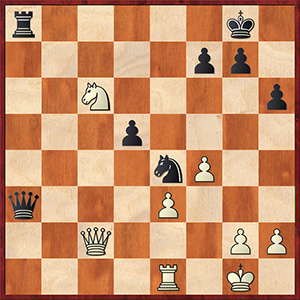
Instead of 34.h3=, White played 34.Nd4?? Qxe3+! 0-1.
Thursday is a free day on both championships, and on Friday key matches the 6th round in the men’s event will be Poland vs. Russia and China vs. Ukraine. In the women’s competition India faces Russia and Ukraine plays against Azerbaijan.
Photos by Eteri Kublashvili













